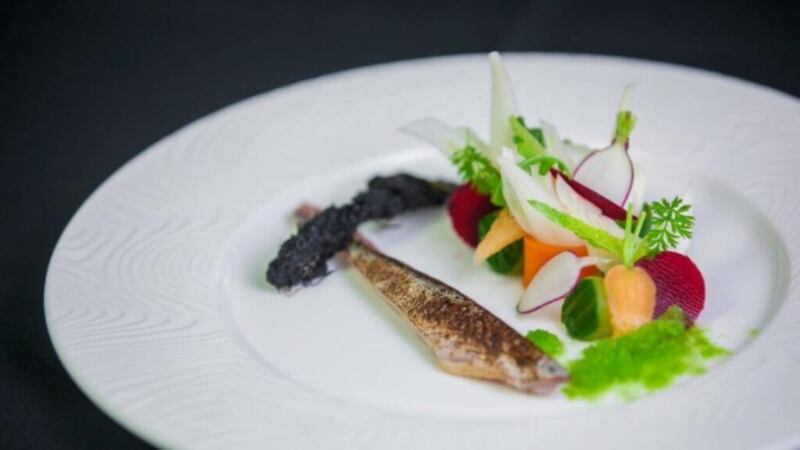Type “Irish food” into an internet search engine and the chances are you’ll get back lamb stew, bacon and cabbage, and fried breakfasts. Nothing wrong with any of those dishes, if done properly. But are they really representative of Irish food today?
Nowhere is the chasm between the perception of Irish food abroad – in some circles at least – and what is being achieved here more apparent than when young Irish chefs take on their contemporaries in national and international competitions.
Cooking with wonderful Irish ingredients, respectful of tradition and terroir but openly embracing modernity, a new generation of Irish chefs is putting the spotlight on world-beating produce and talent.
These are the first image's shown on and internet search for 'food in Ireland' and 'Irish food' Thoughts? A true reflection of #ThisIsIrishFood? pic.twitter.com/Y6SbE6ldiZ
— Sinead Hennessy (@SineadFailte) November 17, 2017
Mark Moriarty's victory in the world final of the inaugural San Pellegrino Young Chef competition, in 2015, lit the touchpaper. Last month another young chef working in Ireland, Killian Crowley, chef de partie at Aniar in Galway, won the UK and Ireland regional heat of the 2018 competition and will take part in the grand final, in Milan, next year.
Also last month, Conor Halpenny, chef de partie at Chapter One in Dublin, headed the field in a very competitive Euro-Toques competition to find the best young chef in Ireland. And at the beginning of November, Aisling Rock, a 21-year-old culinary-arts student at Galway-Mayo Institute of Technology, won a Europe-wide competition for student chefs in Barcelona.
We have the goods and we have the talent, so why isn't Irish food held in higher esteem abroad?
We have the goods and we have the talent, so why isn’t Irish food held in higher esteem abroad?
This Is Irish Food – @ThisisIrishfood – a social-media campaign launched earlier this year by Fáilte Ireland's 21 Food Champions, seeks to address perceived misconceptions about what is truly representative of Irish cuisine in 2017.
“We want to focus the conversation on authentic Irish food and dispel the myths and cliches,” the group said when the initiative was launched, to coincide with St Patrick’s Day.
The Food Champions, all of whom are involved in tourism, food and hospitality, are nominated for the group because of "their proven ability to champion Irish food, influence Irish cuisine, promote and develop Irish food tourism", according to Fáilte Ireland.
Sinead Hennessy, the organisation's food-tourism officer, reignited the debate when she recently posted two photographs of Irish stew on Twitter, alongside this comment: "These are the first images shown on an internet search for 'food in Ireland' and 'Irish food'. Thoughts? A true reflection of #ThisIsIrishFood?
The reaction from chefs and restaurateurs was swift. And the flurry of images of sophisticated, modern dishes that followed painted a very different picture of where Irish food is at in 2017.
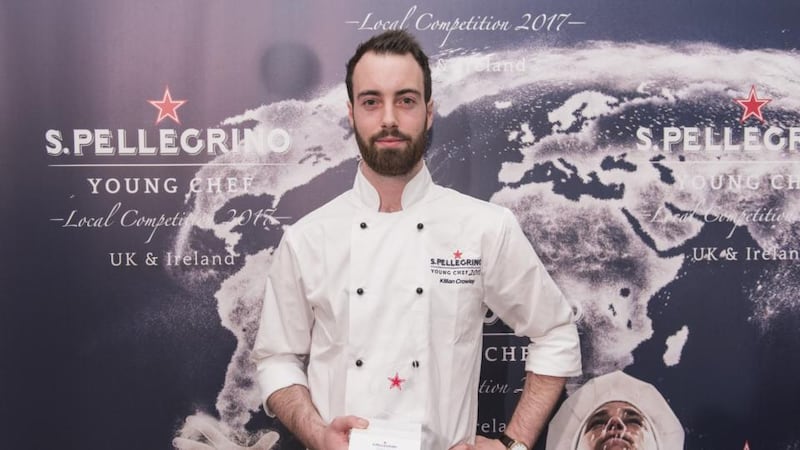
The point was hammered home at the San Pellegrino regional final, when three young chefs representing Ireland went up against seven of the best from the UK. Not only did Killian Crowley take the top honours, but the runner-up slot was also claimed by an Irish representative, Michael Tweedie, head chef at the Oak Room at Adare Manor.
"We want a delicious plate of food that's going to taste fantastic, but it has got to be clever. There's got to be something there that really raises it above being just a plate of food that we could all cook," said the chef Angela Hartnett, one of four judges for the regional final, held in London.
Noting that the winner would have to cook a dish that would stand out in international competition, she said: “I want to see stuff today that makes me think, Wow, how how the hell did they do that? It tastes amazing.”
Hartnett will now mentor Crowley as he prepares for the final next June.
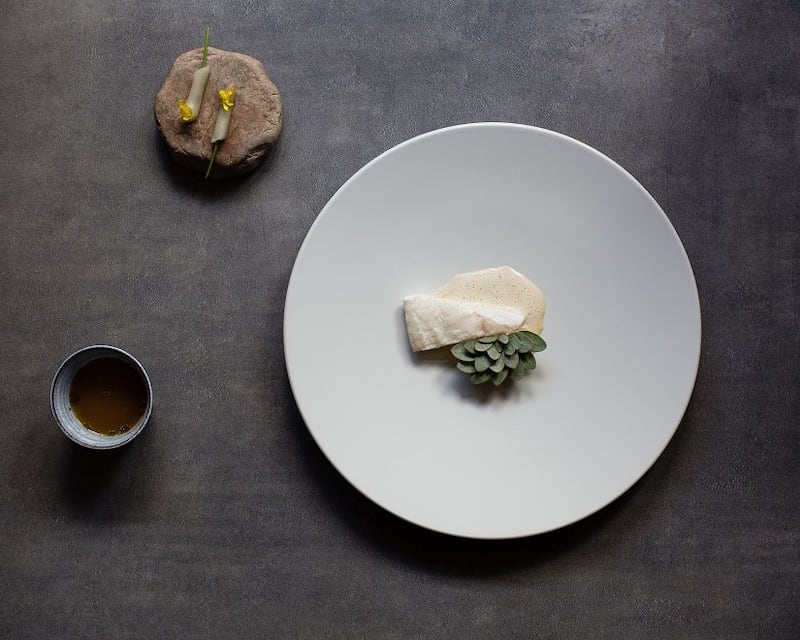
Crowley’s dish stood out for its elegant simplicity, and could not have looked more modern or more assured.
“Wild line-caught turbot, grilled whole on the bone with some seaweed, really slow and low cooking,” is how the chef describes the centrepiece of his dish, which also features “kohlrabi cooked in an oyster-shell crust – like salt baked – and a seaweed broth”. There is also “sea purslane, a wild ingredient that grows on the seashore. I use it on top of the kohlrabi, like a little flower. We handpick it here in Connemara.”
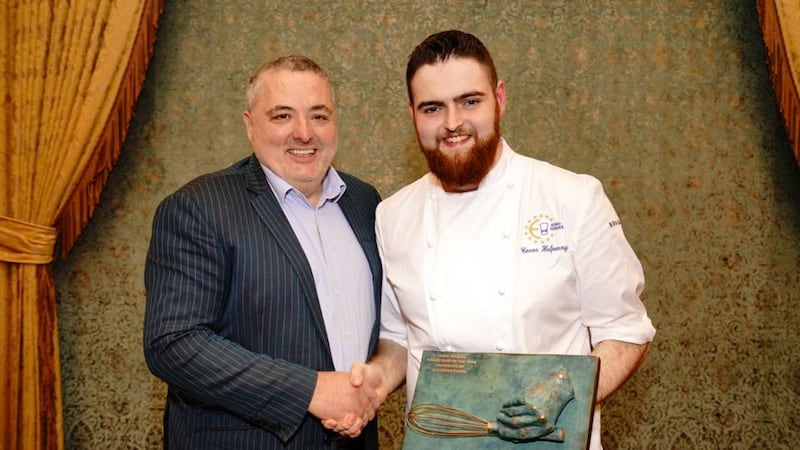
At the Euro-Toques Ireland Young Chef of the Year competition, open to chefs under the age of 26 working in a professional kitchen, the theme was "back to basics: old-school cooking". But old school didn't mean old fashioned when it came to the dishes, one sweet and one savoury, presented by the six finalists.
Conor Halpenny attributed his victory to his sweet dish, of set rice, fermented apple, yogurt and malt. “It was the dessert that I won it on. It was really simple, which they really liked. I basically took an old recipe, like the way my granny would make rice pudding, but just gave it a modern twist.”
The twists included using Green Saffron basmati rice instead of pudding rice, for its floral qualities and ability to stay separate rather than clump, and making a jelly with fermented juice from blusher, or pink-tinged, apples grown and pressed by Highbank organic orchard, in Kilkenny. The result? A picture-perfect dessert.
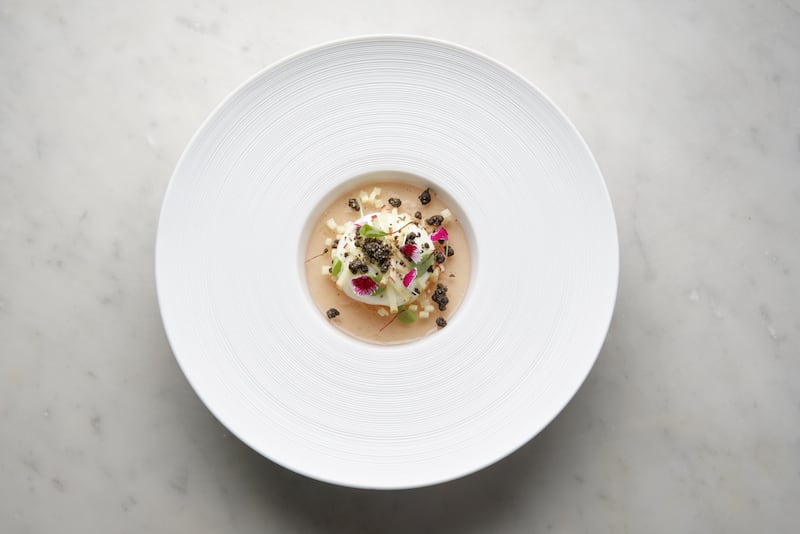
"This year was probably the highest standard of all the years I've been judging this competition," said the chef Wade Murphy, a member of the judging panel. "Conor delivered two perfectly executed dishes that not only followed the back-to-basics brief but showed strong technique, good cooking and a really good understanding of flavour combinations." Halpenny won a placement with the chef Richard Corrigan in London.
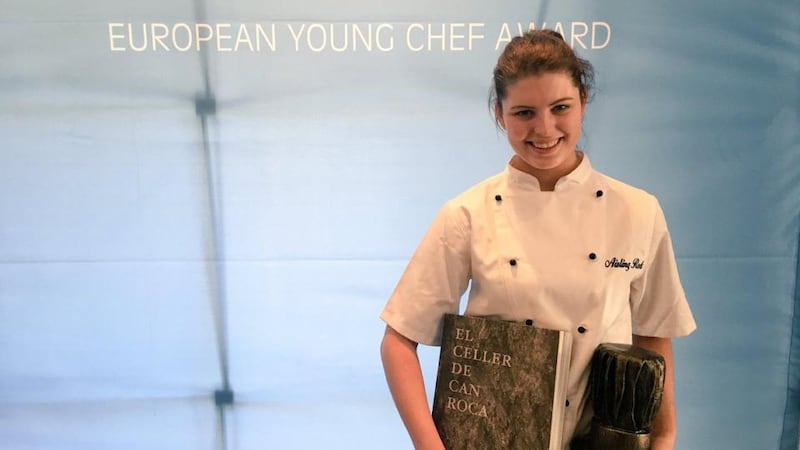
The sweep of accolades for this new generation of trailblazing Irish chefs was initiated with Aisling Rock's crowning as European Young Chef 2017 in a competition for culinary school students held at the University College of Hospitality Management and Culinary Arts in Sant Pol de Mar, near Barcelona.
Innovation on tradition was the theme for the competition, and the brief was for competitors to showcase raw ingredients from their native region and to “creatively combine them according to their personal innovative reinterpretations of the regions’ traditional recipes”.
Rock, a second-year student, wowed the jury with her dish of mackerel, pickle and sheep yogurt, and told them she wanted them to “experience my story and my region through my food”.
Cáit Noone, head of the College of Tourism and Arts at GMIT, was a member of the jury. "Aisling Rock not only outperformed the other very talented finalists, but her storytelling ability was superb, yet raw and humbling, a joy to observe."
There may be a shortage of chefs in Ireland, but with young cooks of this calibre and eloquence in the ranks, the future of Irish food looks to be in safe hands.
